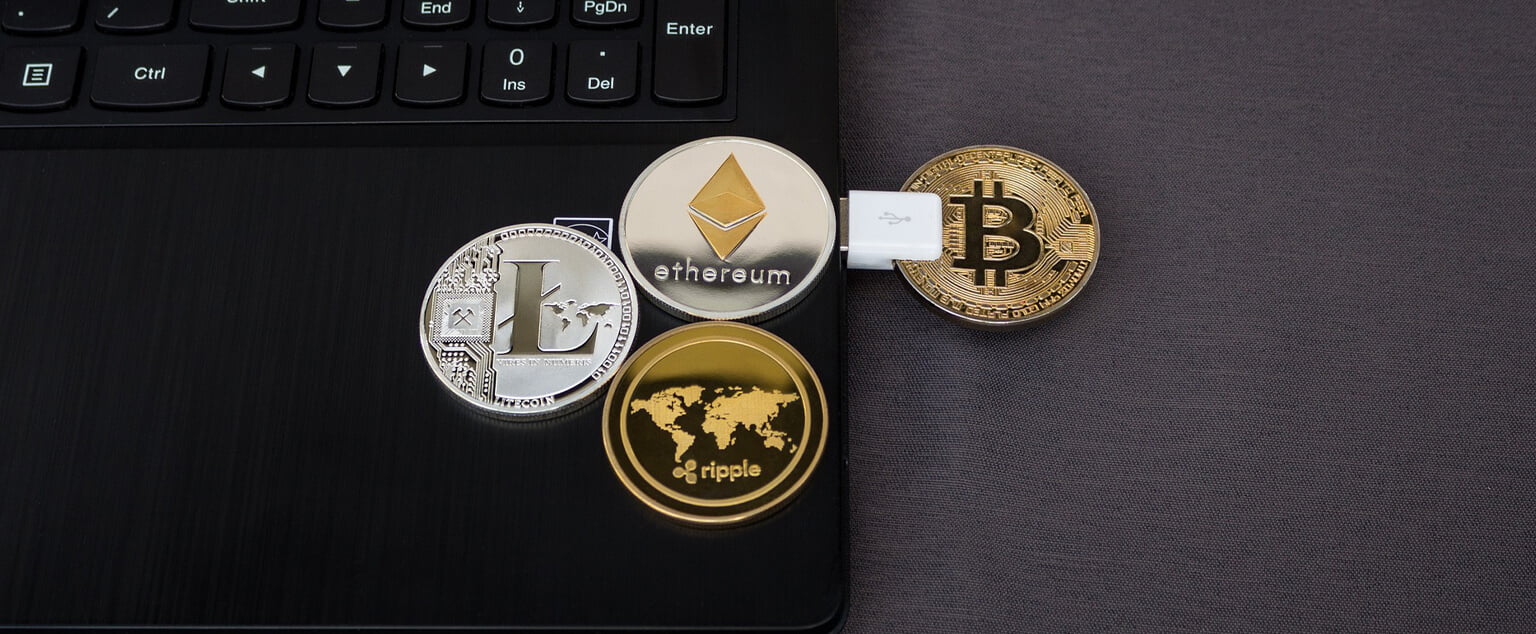Cryptocurrency is a type of digital money that is decentralized and based on blockchain technology. Although you may be familiar with the most popular cryptocurrencies, Bitcoin and Ethereum, there are over 19,000 different cryptocurrencies in circulation.
How does cryptocurrency work?
A cryptocurrency is a decentralized, digital, encrypted medium of exchange. A cryptocurrency, unlike the US dollar or the Euro, has no central authority that manages and maintains its value. Instead, these tasks are distributed widely among cryptocurrency users via the internet.
You can use cryptocurrency to buy everyday goods and services, but most people invest in cryptocurrencies in the same way they would in stocks or precious metals. While cryptocurrency is a novel and exciting asset class, investing in it can be risky because you must conduct extensive research to fully understand how each system works.
Satoshi Nakamoto proposed Bitcoin as the first cryptocurrency in a 2008 paper titled “Bitcoin: A Peer-to-Peer Electronic Cash System.” The project was described by Nakamoto as “an electronic payment system based on cryptographic proof rather than trust.” Transactions that are verified and recorded on a blockchain serve as cryptographic proof.
What Is a blockchain?
A blockchain is a distributed, open ledger that stores transactions in code. In practice, it’s similar to a checkbook that’s spread across thousands of computers all over the world. Transactions are recorded in “blocks,” which are then connected on a “chain” of previous cryptocurrency transactions.
Everyone who uses a cryptocurrency has their own copy of this book with a blockchain to create a unified transaction record. Each new transaction is logged as it occurs, and every copy of the blockchain is simultaneously updated with the new information, ensuring that all records are identical and accurate. To avoid fraud, each transaction is validated using a technique such as proof of work or proof of stake.
Proof of work and proof of stake are the two most common consensus mechanisms used to validate transactions before they are added to a blockchain. Verifiers are then compensated for their efforts with cryptocurrency.
Proof of work
Proof of work is a method of verifying blockchain transactions in which an algorithm generates a mathematical problem that computers compete to solve.
Each participating computer, known as a “miner,” solves a mathematical puzzle that aids in the verification of a group of transactions known as a block, which is then added to the blockchain ledger. The first computer to successfully complete the task is rewarded with a small amount of cryptocurrency for its efforts. For validating a new block, Bitcoin, for example, pays a miner 6.25 BTC (roughly $200,000).
The race to solve blockchain puzzles can necessitate massive amounts of computer power and electricity. After deducting the costs of power and computing resources, miners may barely break even with the cryptocurrency they receive for validating transactions.
Proof of stake
To reduce the amount of power required to check transactions, some cryptocurrencies employ a proof of stake verification method. The amount of cryptocurrency each person is willing to “stake,” or temporarily lock up in a communal safe for the chance to participate in the process, limits the number of transactions each person can verify with proof of stake.
“It’s almost like bank collateral,” Okoro says. Everyone who stakes cryptocurrency is eligible to verify transactions, but your chances of being chosen typically increase with the amount you stake.
In comparison, the average transaction time for Bitcoin is at least ten minutes. Compare that to Solana, a crypto platform that employs the proof-of-stake mechanism and averages around 3,000 transactions per second (TPS), making it significantly faster than the sluggish Bitcoin blockchain.
Also on the horizon is the adoption of a proof-of-stake mechanism by Ethereum, Bitcoin’s main competitor. When Ethereum completes “the final chapter of proof of work on Ethereum,” it expects its energy consumption to drop by 99.95%.
The sole of consensus in crypto
To verify transactions, both proof of stake and proof of work rely on consensus mechanisms. This means that, while each relies on individual users to verify transactions, each verified transaction must be reviewed and approved by the majority of ledger holders.
How does cryptocurrency mining work?
Mining is the process by which new cryptocurrency units are released into the world, usually in exchange for validating transactions. While the average person can theoretically mine cryptocurrency, it is becoming increasingly difficult in proof-of-work systems such as Bitcoin.
Proof-of-work cryptocurrencies, on the other hand, necessitate massive amounts of energy to mine. Bitcoin mining, for example, currently consumes 127 terawatt-hours (TWh) of electricity per year, which exceeds Norway’s total annual electricity consumption.
While mining in a proof-of-work system is impractical for the average person, the proof-of-stake model requires less powerful computing because validators are chosen at random based on the amount they stake. However, in order to participate, you must already own a cryptocurrency. (If you don’t have any cryptocurrency, you have nothing to stake.)
How can you use cryptocurrency?
While you can buy a variety of goods and services with crypto, particularly Litecoin, Bitcoin, or Ethereum, you can also use crypto as an alternative investment option to stocks and bonds.
Using crypto to make secure purchases is dependent on what you’re trying to buy. If you want to make a cryptocurrency payment, you’ll most likely need a cryptocurrency wallet. A “hot wallet” is a type of wallet that interacts with the blockchain and allows users to send and receive their stored cryptocurrency. Keep in mind that transactions are not instantaneous because they must be validated by some mechanism.
How does cryptocurrency gain value?
Let’s take a look at the ultimate crypto bellwether: Bitcoin, to see how some cryptos can appreciate in value.
Bitcoin nearly quadrupled in value in 2020, finishing the year above $28,900. By April 2021, the price of BTC had more than doubled from the start of the year, but by July, all of those gains had been erased. Then BTC more than doubled again, reaching an intraday high of more than $68,990 on November 10, 2021—before falling to around $46,000 by the end of 2021. While the original cryptocurrency is down 35% year to date, Bitcoin has increased by more than 1,000% in the last five years.
Five advantages of cryptocurrency
- High risk—and the possibility of high reward
- The cryptocurrency’s underlying blockchain technology is inherently secure.
- Say goodbye to traditional banks and hello to a more equitable and transparent financial system.
- Cryptocurrency trading is available 24 hours a day, seven days a week.
- Cryptocurrencies could be able to help investors beat inflation.
Five disadvantages of cryptocurrency
- It takes time and effort to understand cryptocurrency.
- Cryptocurrencies can be a high-risk investment.
- Cryptocurrencies have yet to be proven as a long-term investment.
- Cryptocurrency has significant scalability issues.
- Newcomers to cryptocurrency are vulnerable to security risks.







[…] What is cryptocurrency? and how does it work? […]
[…] music, in-game items, videos, and other media. They are purchased and sold online, frequently using cryptocurrency, and are typically encoded with the same underlying software as many […]